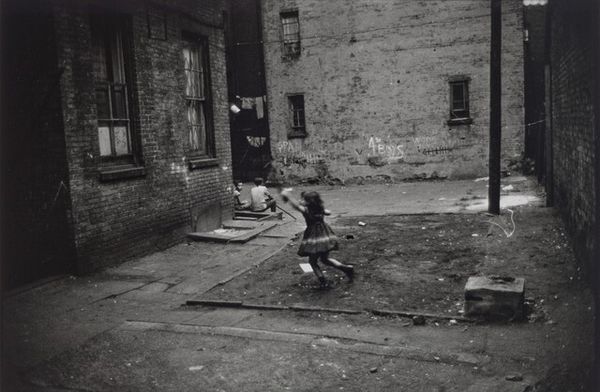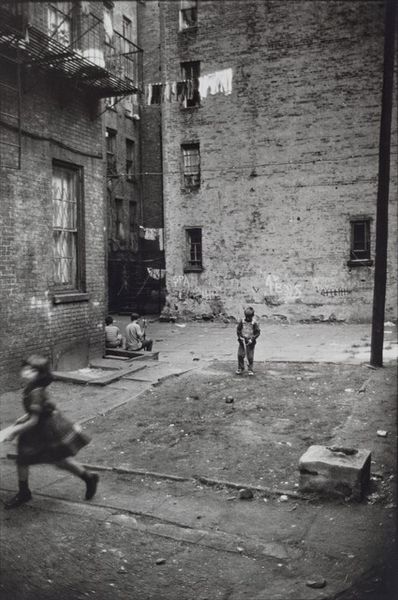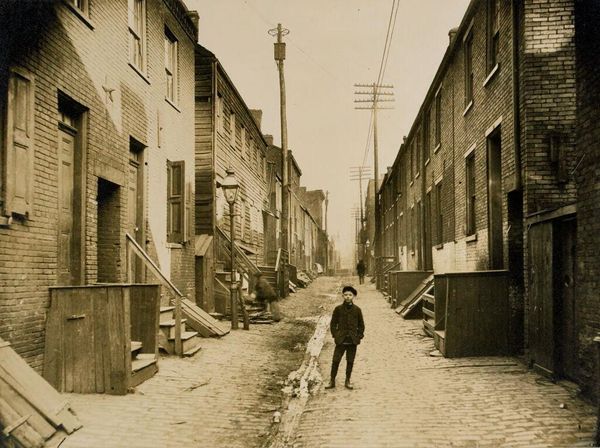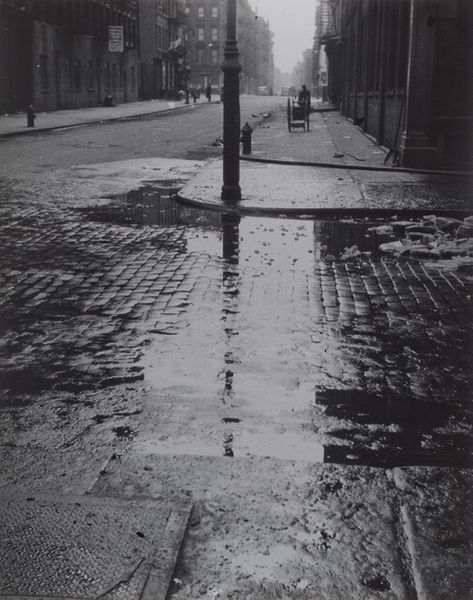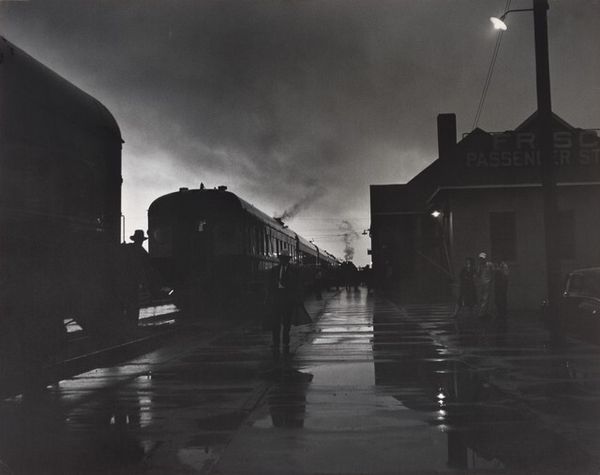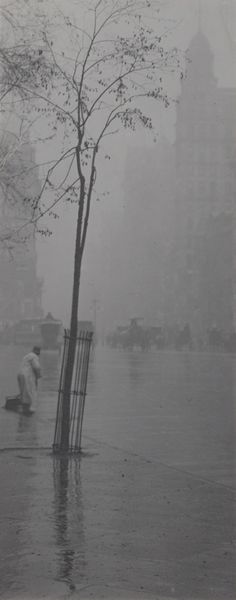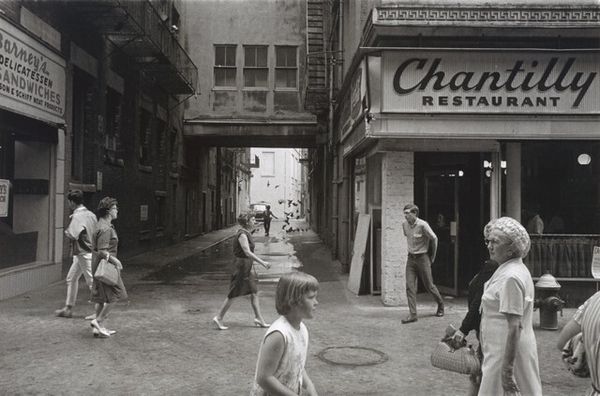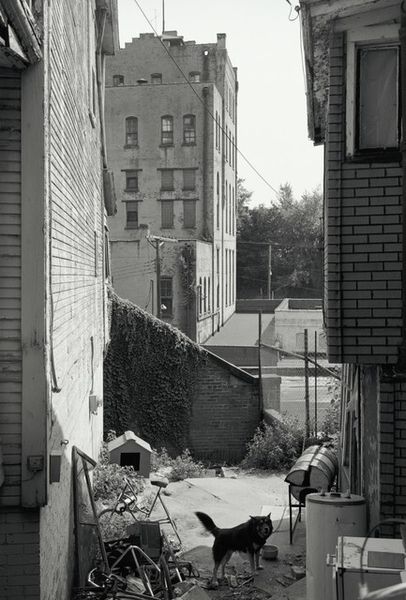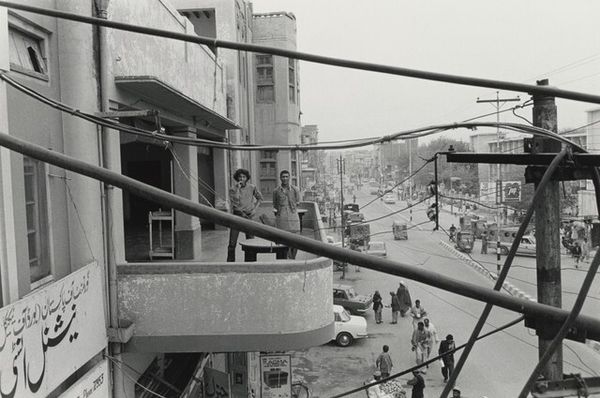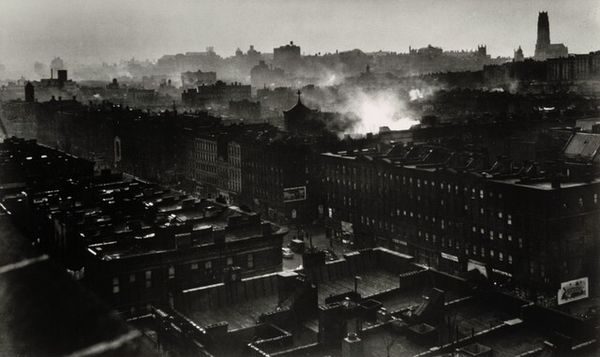
photography, gelatin-silver-print
#
street-photography
#
photography
#
gelatin-silver-print
#
street photography
#
cityscape
#
modernism
#
realism
Dimensions: image/sheet/mount: 25.9 × 33.9 cm (10 3/16 × 13 3/8 in.)
Copyright: National Gallery of Art: CC0 1.0
Editor: Here we have Ruth Orkin's gelatin silver print, "Sandstorm, New York City" from 1949. The composition and grittiness give the scene a feeling of both intimacy and urban decay. What strikes you most about this piece? Curator: What jumps out is how Orkin captures the complexities of urban life, especially for women and children. This wasn't just a portrait of a city, but a document of a particular socio-economic landscape post-war. Consider the layers of visibility here: Who gets to occupy public space? Who is forced to? Editor: I see what you mean. The adults on the sidewalk are separated by gender and seemingly by task, yet there's also a strange kind of community. The playing child also gives it this kind of "grit meets play" element. Curator: Precisely. This photo disrupts the myth of the nuclear family thriving in idyllic suburbia, showcasing a different reality. Think about the politics of space: How does the "sandstorm" – possibly industrial pollution – disproportionately affect marginalized communities? It’s a question of environmental justice, even back then. Editor: I hadn't considered the environmental angle so explicitly, though I definitely felt an oppressive weight. What would you say is Orkin's stance on these conditions? Curator: It's less about taking a 'stance' and more about bearing witness. She's prompting us to confront uncomfortable truths about class, environment, and the human condition without offering easy answers. Her work makes viewers confront the reality behind "city life" in intersectional ways that acknowledge identity, race and class. Editor: So, she acts as a conduit for us to start asking these questions. I realize that the image is as much about the un-pictured policies that shaped this scene as it is about the photograph itself. Curator: Absolutely. It's about digging beneath the surface to expose the systemic issues at play. Hopefully more viewers take a closer look at these dynamics too, given the power this exhibit has to open these lines of thought.
Comments
No comments
Be the first to comment and join the conversation on the ultimate creative platform.
